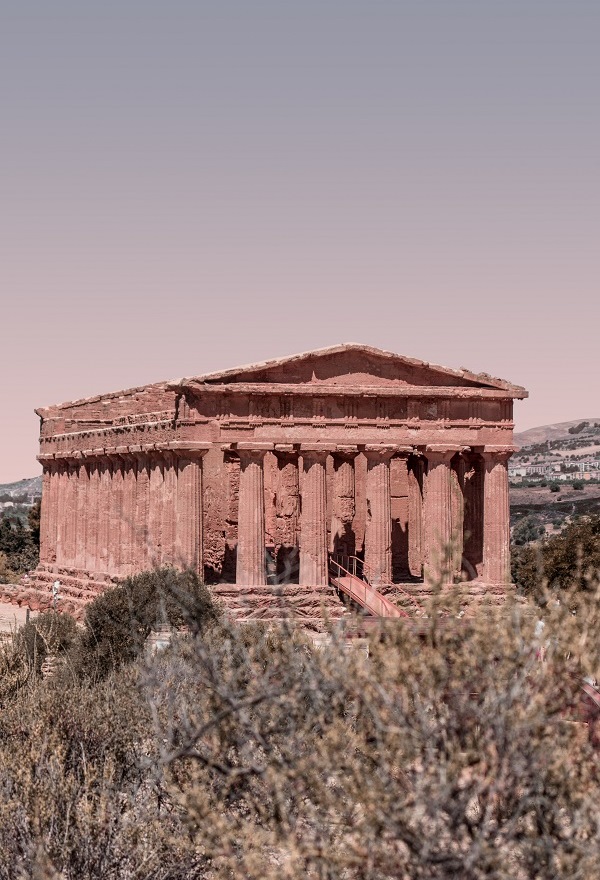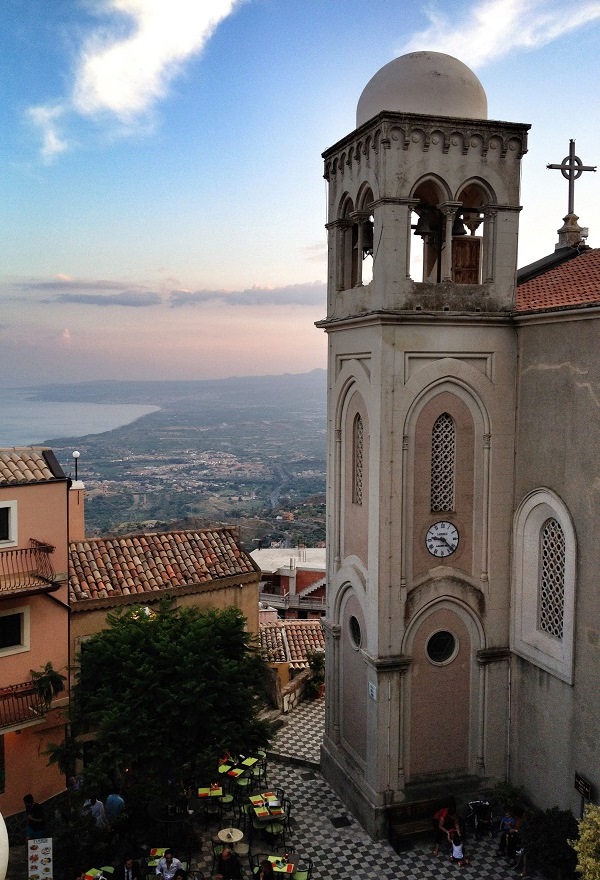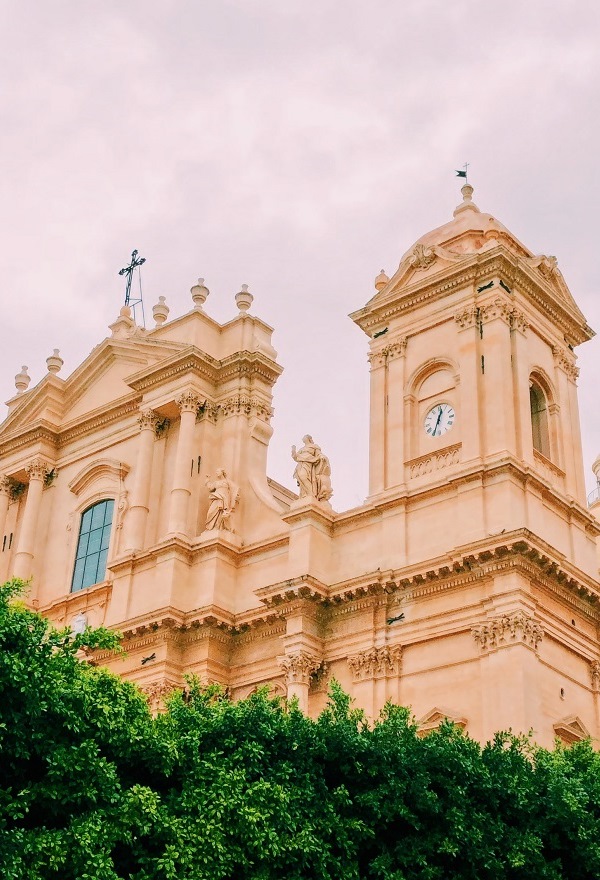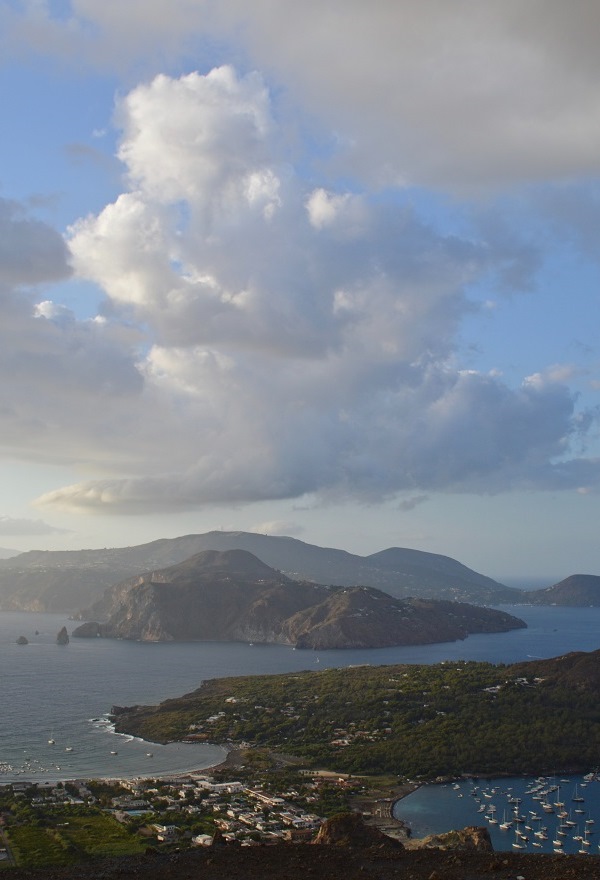Mount Etna

Sicilian Baroque

Scala dei Turchi

Valley of the Temples

Sandy Beaches

Mount Etna

Sicilian Baroque

Scala dei Turchi

Valley of the Temples

Sandy Beaches

Mount Etna

Mount Etna dominates the Sicilian landscape; its omniscient, smoking silhouette a constant reminder of the very fabric of the island’s past, present and future. It’s the second most active volcano in the world, and as such it’s of course a must-visit in Sicily. Those with a low level of fitness don’t need to worry, visiting Etna can be as easy or as difficult as you intend to make it. Take a sturdy pair of high-top walking boots, gloves, a snood and plenty of layers for the high, icy winds (which steadily become more severe the higher you go – even in the summer). Your first stop should be Etna Sud, a base camp of sorts with a small selection of tourist shops, restaurants, hotels and importantly, the cable car station, Funivia dell’Etna. Take the cable car to 2.900 mt to begin your Etna expedition. Taking the cable car is by no means a shortcut, there are plenty of opportunities for heart-pumping hikes from the setting-off point, including the invigorating final ascent to the summit craters at over 3.300 mt. Bear in mind that it’s not possible to climb to the summit craters without a qualified guide or volcanologist. Climbs to Etna’s main crater are currently prohibited, owing to unpredictable volcano conditions.
The Valley of Temples

When Icarus flew too close to the sun during his and his father Daedalus’ escape from Crete, his wax-crafted wings melted; he plummeted to the sea and drowned. Daedalus, distraught, sought sanctuary in Agrigento, on the undiscovered island of Sicily, and mourned his son. In Apollo’s honour, he built what would become the first of the city’s fabled wonders, The Temple of Apollo. In real terms, the city was founded by the Ancient Greeks around 500 BC. Their archaeological legacy, namely the world-famous Valley of Temples, remains remarkably well-preserved to this day. The Ancient Greeks believed Agrigento to have been founded by Daedalus, and so began its transformation into an important cultural and religious hub. The UNESCO-listed archaeological park Valle dei Templi consists of seven temples built between 400 and 500 BC. They are the Temple of Concordia, Temple of Juno (or Hera), Temple of Heracles, Temple of Olympian Zeus, The Sanctuary of Demeter and Persephone (formerly known as the Temple of Castor and Pollux), Temple of Vulcan and Temple of Asclepius. Various other relics remain in the city. After all, at its height, Agrigento is said to have held 300.000 inhabitants, ruled by a series of notable figures including Phalaris the tyrant, a notorious ruler whose executions saw wrongdoers enclosed inside a bronze bull and slow-roasted over a fire. An oratory erected in his name is said to have been built on the site of his former palace. Look out too for a mausoleum that was once thought to have been the final resting place of another tyrant ruler named Theron, a pre-Hellenic cave sanctuary, and an 800-year-old olive tree.
Siracusa & Ortigia

Siracusa is a sprawling metropolis in southern Sicily, home to some of the island’s most important archaeological finds. Well-preserved Greek and Roman ruins are what have come to define the city’s appeal, the main attraction being Parco Archeologico della Neapolis. The park contains many a number of ancient wonders. Primarily a Greek amphitheatre, a Roman gladiatorial theatre, a sacrificial altar, and Latomia del Paradiso, a network of ancient limestone quarries and catacombs. The latter is famed as the location of the Ear of Dionysius, a cave with an ear-shaped, slashed opening. It was named by the revered Italian painter Caravaggio, who was inspired by the local legend suggesting the cave’s fine-tuned acoustics allowed Dionysius, an ancient Sicilian ruler, to trap political prisoners and eavesdrop easily on their wicked plans. You couldn’t visit Siracusa without visiting Ortigia, the jewel in Siracusa’s crown. The small, bridge-linked island is where the locals go to have a good time. With a range of glitzy restaurants and bars, plus picture-perfect sunsets, it’s an enchanting romantic setting and ideal for evening strolling. Don’t miss the Cathedral of Siracusa in Piazza del Duomo. It’s a masterpiece of baroque architecture, and its interior unlike any other cathedral you’ll have visited before.
Catania

As the second largest city of Sicily, Catania is an important economic hub for the country and is actually the 7th largest metropolis by area. With a population of 315.000 and a greater metropolitan population of 767.000, Catania lies on the eastern coast of Sicily directly in-between Siracusa in the South and Messina in the North. This city was originally founded as a Greek colony in ancient times and since then has been part of numerous Empires and cultures including the Carthaginians, the Roman Republic, the Ostrogoths and eventually became part of the Kingdom of Italy. During the Renaissance period, Catania was one of the most influential cities in the country and was known for its rich culture, arts and history. Today, Catania maintains a huge amount of its heritage and culture and offers a plethora of interesting structures and museums such as the Basilica Sant’Agata and the Museo Civici.
Duomo di Cefalù

Cefalù’s cathedral is one of the jewels in Sicily’s Arab-Norman crown, only equalled in magnificence by the Cattedrale di Monreale and Palermo’s Cappella Palatina. Filling the central apse, a towering figure of Cristo Pantocratore is the focal point of the elaborate Byzantine mosaics, Sicily’s oldest and best preserved, predating those of Monreale by 20 or 30 years. In his hand, a compassionate-looking Christ holds an open Bible bearing a Latin and Greek inscription. Other mosaic groups include the Virgin with Four Archangels dressed as Byzantine officials. The 16 interior columns with Roman capitals probably came from the Tempio di Diana on La Rocca. Legend tells us that the cathedral was built by Roger II in the 12th century to fulfil a vow to God after his fleet was saved during a violent storm off Cefalù. In fact, it was more likely the result of Roger’s tempestuous relationship with the Palermitan archbishopric. Eager to curb the growing influence of the papacy in Sicily (with whom the Palermo archbishopric had close ties), Roger thought that building a mighty church so far from Palermo would prove an effective reminder of his power across the island and pose a disincentive to any potential usurpers. It’s thus hardly surprising that the cathedral’s architecture is distinctly fortress-like.
Palermo

Palermo, Sicily’s capital, is a city with its own distinct, almost tangible atmosphere. This is Sicily’s beating heart; an ideal location for first-timers to the island with a week or so to explore. Its varied landscape offers something for everyone, while its range of bars, restaurants, theatres and museums means you can be sure of a chaotic itinerary. Don’t miss Teatro Massimo, a feat of Sicilian architecture and one of the world’s most renowned opera houses. Art and history lovers will adore Palazzo dei Normani, a Norman palace that’s home to the dazzling Palatine Chapel, filled with gilded religious iconography. Puppet show theatre is one of Palermo’s quirky cultural delights, and you can catch regular performances at one of the many theatres in the city. Monte Pellegrino, the city’s mighty mountain, provides a beautiful backdrop to the city, but also excellent opportunities for long walks and hiking, with views out to Mondello bay and beyond. Spiaggia di Mondello is the city’s popular white-sand beach. For those with a taste for the macabre, head to the city’s historic catacombs, Catacombe dei Cappuccini. The embalming of bodies was once a 15th century funerary practice reserved for passed Capuchin monks, but it soon became fashionable among Palermo’s wealthy citizens. What draws visitors to the catacombs is the corpse of two-year-old Rosalia Lombardo. The little girl died of pneumonia in 1920. Her tragic passing led her father to embalm her body using techniques never attempted before, and as a result, her embalmed body is extremely well-preserved. Local whispers suggest that her eyes open at a particular time of day. Experts however, generally agree this to be a fault in the stitching of her eyelids, which is only visible when the sun shines directly on the body at a particular time of day.
Scala dei Turchi

Located on the south coast of the island, near Realmonte, a few kilometers far from Agrigento, it is called “Scala” because of its shape. It is a cliff, that is, an outcrop of white marl, a mixture of clay and chalk that offers a vivid contrast between its blinding white and the blue of the sea and sky. This contrast has inspired several photographers from all over the world, who have captured it in several shots. This monument of nature takes its name, not only because of its singular shape which is the result of the centuries-old wind polishing work but also from the legend that says that during the Moorish invasions, (wrongly called as Turchi), these reached Realmonte, climbing on the stratifications of this magical cliff.
getting around the island
Boasting everything from nature reserves to archaeological ruins, Sicily is the perfect destination for science and history lovers, as well as everyone in between. Sicily is a symphony of sights, textures, sounds and tastes. As the largest island in the Mediterranean, Sicily boasts a dramatic mix of sea and mountains, including an active volcano and some of Italy's most turquoise coves. Locals say that Sicily is not Italy, and from the very first step you’ll discover that what you see on this island is not what you’d expected.
Castelmola

For eye-popping views of the coastline and Mt Etna, head for this cute hilltop village above Taormina, crowned by a ruined castle. If you’re reasonably fit, head up on foot (one hour) for a good workout and sweeping panoramas. Alternatively, take the hourly bus service. While you’re up here, stop in for almond wine at Bar Turrisi, a multilevel bar with some rather cheeky decor.
Noto and the Baroque Towns

When the ancient mountain city of Netum was destroyed in the 17th century, Italy’s architectural elite busied themselves on a new vision for the displaced residents, inspired by the period’s defining design movement. What they created was a baroque masterpiece: today’s Noto, 10km south of the original site. This small town was designed to impress. Its elevated position, surrounded by green hills and citrus orchards, was perfectly orchestrated by the architects to allow their buildings to be bathed in an apricot glow at twilight. The result: the shadows of the buildings’ stuccoed figures dancing across their already-theatrical facades. While you don’t need to spend more than a day or two exploring the town itself, it’s worth settling in for a few days as its location is an ideal base for a range of local attractions, including the Vendicari Nature Reserve, Cavagrande del Cassibile Nature Reserve, the baroque towns of Modica and Ragusa, and the gorgeous seaside towns of Marzamemi and Portopalo. Conveniently, the ‘stone garden of Sicily’ is perfect for mornings spent indulging in granita, and evenings spent strolling the lamp-lit streets, leaving your days free to explore the region. If you have time, don’t miss the now crumbled Noto Antica, historic Netum, with roots that pre-date the Roman conquest of Sicily. There are plenty of archaeological gems to be discovered in amongst the mountain vegetation that has consumed them over time, and the views from the top of the Norman fort are incredible.
Gole dell'Alcantara

Created by waves of lava centuries ago, Gole dell’Alcantara is a series of canyons located in the Botanical Park. Between the Messina and Catania provinces, the magma percolation runs along the Alcantara River and has led to a number of horizontal and vertical configuration, and some basalt walls as tall as 50 meters. If you want to know more, guided tours can be arranged at the Museum of Land or the nature trail. The excursion includes a taste-testing of regional specialties.
The Aeolian Islands

This huddle of volcanic islands are part of the Sicilian province of Messina, and their wild, fiery beauty isn’t to be missed. Situated in the Tyrrhenian Sea, halfway between Sicily’s northeast and the toe cap of Italy’s boot, they’re collectively listed as a UNESCO World Heritage Site. Lipari forms the central hub of the Aeolian Islands. It serves as an excellent jumping-off-point for the surrounding six islands. Most people make a beeline for the island of Vulcano. It’s famous for its mud baths, or fanghi. Its otherworldly landscape is dominated by the smoking Gran Cratere volcano, that exudes sulphurous fumes almost constantly. You’ll find several beaches there too, with thermal hot springs. Spend time on spectacular black sand beaches on Stromboli, perhaps the most beautiful of the Aeolian Islands. The Stromboli volcano has been in a state of constant eruption since 1932, its clouds of steam emanate continuously from the peak. From here, you can hike the foothills of the volcano and the rocky coves of the surrounding beaches. The smaller islands of Salina, Panarea, Alicudi and Filicudi are the lesser-visited of the Aeolian Islands. If you love a little luxury, head to Panarea for its glitzy, high-end scenes. Nature lovers should head to Salina, Alicudi or Filicudi for their verdant landscapes. The latter two are so remote they’re almost completely untouched by tourists.
Cattedrale di Monreale

Inspired by a vision of the Virgin and determined to outdo his grandfather Roger II, who was responsible for the cathedral in Cefalù and the Cappella Palatina in Palermo, William II set about building the Cattedrale di Monreale, 8km southwest of Palermo. Incorporating Norman, Arab, Byzantine and classical elements, the cathedral is considered the finest example of Norman architecture in Sicily. It’s also one of the most impressive architectural legacies of the Italian Middle Ages. Although the cathedral’s mosaicists hailed from Sicily and Venice, the stylised influence of the Byzantines pervades their work. Completed in 1184 after only 10 years’ work, their shimmering masterpieces depict biblical tales, from the creation of man to the Assumption, in 42 different episodes. The beauty of the mosaics cannot be overstated – you have to see for yourself Noah’s ark perched atop the waves or Christ healing a leper infected with large leopard-sized spots. The story of Adam and Eve is wonderfully portrayed, with a grumpy-looking, post-Eden-eviction Eve sitting on a rock while Adam labours in the background. The large mosaic of Christ, dominating the central apse, is stunning. Binoculars make viewing the mosaics easier, although they are still impressive to the naked eye. Adjacent to the cathedral is the entrance to the cloister, which illustrates William’s love of Arab artistry. This tranquil courtyard is an ode to Orientalism, with elegant Romanesque arches supported by an array of slender columns alternately decorated with shimmering mosaic patterns. Each capital is unique, and taken together they represent a sculptural record of medieval Sicily. Especially interesting is the capital of the 19th column on the west aisle, depicting William II offering the cathedral to the Madonna.
Villa Romana del Casale

Villa Romana del Casale is sumptuous, even by decadent Roman standards, and is thought to have been the country retreat of Marcus Aurelius Maximianus, Rome’s co-emperor during the reign of Diocletian (AD 286–305). Certainly, the size of the complex, four interconnected groups of buildings spread over the hillside, and the 3.535 sqm of astoundingly well-preserved multicoloured floor mosaics suggest a palace of imperial standing. Following a landslide in the 12th century, the villa lay under 10 mt of mud for some 700 years, and was thus protected from the damaging effects of air, wind and rain. It was only when serious excavation work began in the 1950s that the mosaics, considered remarkable for their natural, narrative style, the range of their subject matter and the variety of their colour, were brought back to light. The villa’s recent restoration has covered almost the entire complex with a wooden roof (to protect the mosaics from the elements), while an elevated walkway allows visitors to view the tiled floors and the structure itself in its entirety.
Saline di Trapani

Along the coast between Trapani and Marsala lies this evocative landscape of saline (shallow salt pools) and decommissioned mulini (windmills). The salt from these marshes is considered Italy’s finest and has been big business for centuries. The most attractive stretches of coast are protected within two wetland preserves: Riserva Naturale Saline di Trapani e Paceco to the north near Trapani, and Riserva Naturale di Stagnone to the south near Marsala. The latter encompasses San Pantaleo island – home to the noted archaeological site of Mozia – and the larger Isola Lunga, which protects the shallow waters of Stagnone lagoon. Definitely unmissable the migration season, when some species of birds go en route to Africa including the flamingo and the heron.
PLAN YOUR VISITS NOW
Whatever you need and whenever you need it, simply ask.
Call us (0039) 0942 23537 or contact our Concierge Team online here.
Our guests are the heart of our hotel.
Taormina
Looking for things to see in Taormina?
Find Out MoreHow to Reach Us
The best ways to reach The Ashbee Hotel
Find Out MoreGet the latest offers
Sign up for our newsletter
Viale San Pancrazio 46,
98039 Taormina (ME), Italy
+39 0942 23537

LUXURY PRIVATE PROPERTIES GROUP Copyright © 2021 – Società Immobiliare ed Alberghiera Srl Via Ugo Bassi 28 – 98123 Messina (ME) C.F. & P.IVA: 02827370830 – Registro delle Imprese di Messina – N. Rea ME-195462 Cap. Soc. €2.500.000,00 interamente versato






